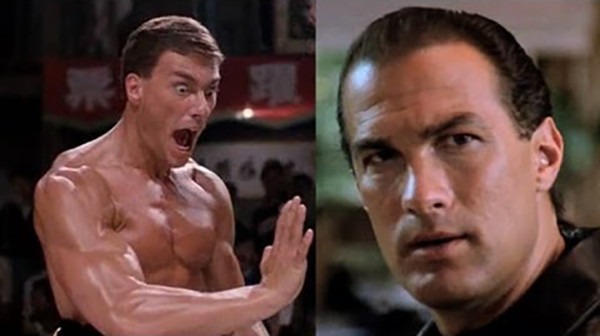The Peasants, 2023.
Directed by DK Welchman and Hugh Welchman.
Starring Kamila Urzędowska, Robert Gulaczyk, Mirosław Baka, Ewa Kasprzyk, Sonia Mietielica, Andrzej Konopka, Małgorzata Kożuchowska, Sonia Bohosiewicz, Julia Wieniawa, Dorota Stalińska, Maciej Musiał, Mateusz Rusin, Lech Dyblik, Helena Korczycka, Mateusz Malecki, Cezary Łukaszewicz, Cyprian Grabowski, Andrzej Mastalerz, Anna Grzeszczak, Klara Bielawka, Piotr Srebrowski, Mariusz Kiljan, Jarosław Gruda, Małgorzata Maślanka, Mariusz Urbaniec, Szymon Kukla, Andrzej Luter, Tomasz Więcek, Jadwiga Wianecka, and Marek Pyś.
SYNOPSIS:
Jagna is a young woman determined to forge her own path in a late 19th-century Polish village – a hotbed of gossip and ongoing feuds, held together, rich and poor, by adherence to colorful traditions and deep-rooted patriarchy.
Animation filmmakers DK and Hugh Welchman have returned with their admittedly beguiling visual technique of taking raw footage shot with actors and weaving those scenes into a series of oil paintings, this time adapting Wladyslaw Stanislaw Reymont’s acclaimed novel The Peasants. It’s a process that reportedly took 200,000 hours of painterly animation (influenced by nineteenth and twentieth-century Polish art), an endeavor that feels taken up in vain despite the vivid images on display since the narrative not only has plenty of shortcomings but also begs the question of what this visual style adds to the experience beyond flash. With the directing team’s previous feature, Loving Vincent, the material is based on the life of Vincent van Gogh, a painter, so that choice felt natural; a biopic from the perspective of a historical figure attempted to tap into a literal sense of how he sees the world and found inspiration for his celebrated works.
No one takes enjoyment (at least they shouldn’t) in putting down hard work that took an unfathomable amount of time to create, especially since a great deal of passion went into the project. That much is made clear, and supporters of animation should seek this film out regardless. When the film breaks into one of its many musical numbers (courtesy of Polish music artist Lukasz Rostkowski aka L.U.C.), the photography often pulls back during scenes of rapturous celebratory dancing, with characters and dresses blending into one another, almost appearing as a single entity, sometimes giving off the resemblance of a flower in motion.
There is still a slight distraction from how transparent the entire visual presentation is (even if I hadn’t written any of what’s mentioned above, one can easily catch on to the live-action/oil painting hybrid), and due to the jittery framerate, but that can be overlooked considering the number of dazzling images on display, sometimes coming during or immediately after a horrifying stretch of the story.
That story is centered on free-spirited peasant Jagna Paczesiówna (Kamila Urzedowska), madly in love with married man Antek Boryna (Robert Gulaczyk), much to the disapproval of his wife Hanka (Sonia Mietielica.) He belongs to the wealthiest family of farmers in this nineteenth-century Polish village comprised of haves and have-nots, with his father Maciej (Miroslaw Baka) unknowingly throwing a wrench in the otherwise secret relationship by purchasing her hand in marriage in exchange for six acres of conveniently located and useful land for the family. Jagna values independence and is not thrilled about this, but plays along as this is, unfortunately, her role in this misogynistic society where women are trading pieces for land ownership and strategical power.
However, as much as she still sees Antek whenever possible privately (although their dancing is bursting with such passion that Maciej is not blind to what’s happening), she’s also not afraid, exerts independence, and refuses to be a damsel in distress. Meanwhile, Antek’s entire life is upended, with him and his wife tossed out of his father’s property. Factoring in that this is a ton of gossip where Jagna unfairly has a soiled reputation for daring to be a freethinker concerned with her personal fulfillment just as much as what is expected of her, to the point of standing up to the patriarchy, nothing about this arrangement is on a collision course to a happy place, filled with relevance and messages that apply to the times today.
With that said, it almost feels like the sole reason to present The Peasants as an animated feature is that because some of the graphic scenes of sexual abuse are blended in with oil painting animation, it gets away with an R rating? There just isn’t much here suggesting why this had to be an animated feature. There is also no way of knowing if this is due to the animation or not, but the dialogue is delivered stiffly as if the performers are bored. Strangely, this does not match how expressive the body language is for the characters (the ending, in particular, conveys a strong sense of empowerment.)
The filmmakers are also attempting to condense 1,000 words and four seasons into an approximately two-hour film, which results in scattered, rushed storytelling that doesn’t get the most drama out of its several ongoing threads. The Peasants does has enough visual beauty and infectiously ebullient folky music to offset that. It is worth watching for that dazzling, painstakingly crafted blend of live-action and oil painting animation alone; the effort, skill, and vivid images on display warrant it regardless of the necessity of that creative choice or not.
Flickering Myth Rating – Film: ★ ★ ★ / Movie: ★ ★ ★
Robert Kojder is a member of the Chicago Film Critics Association and the Critics Choice Association. He is also the Flickering Myth Reviews Editor. Check here for new reviews, follow my Twitter or Letterboxd, or email me at MetalGearSolid719@gmail.com















